Abstract
This study examined the relationship between daily physical activity and aerobic fitness in 11-16-year-olds. Habitual physical activity was assessed in 28 boys (mean(s.d.) age 13.6(1.3) years) and 45 girls (mean(s.d) age 13.7(1.3) years) from minute-by-minute heart rate monitoring during 3 school days. Aerobic fitness was assessed by determining the percentage peak VO2 at blood lactate reference values of 2.5 and 4.0 mmol l-1 during incremental treadmill running. The 4.0 mmol l-1 level occurred at a mean(s.d.) value of 89(7)% peak VO2 in both boys and girls and mean(s.d.) values at the 2.5 mmol l-1 level were 82(9)% peak VO2 in girls. Mean(s.d.) percentage time with heart rates at or above 140 beats min-1 was 6(3)% in boys and 5(3)% in girls. Corresponding values for percentage time at or above 160 beats min-1 were 3(2) for boys and 2(1) for girls. The number of 10- and 20-min periods of activity with the heart rate sustained above the 140 and 160 beats min-1 thresholds were also totalled over the 3 days. No significant relationships were identified between percentage peak VO2 at the 2.5 or 4.0 mmol l-1 blood lactate reference levels and either percentage time or number of 10- or 20-min periods above 140 or 160 beats min-1 (P > 0.05). These results support the hypothesis that daily physical activity levels in 11-16-year-old children do not stress aerobic metabolism sufficiently to influence aerobic fitness.
Full text
PDF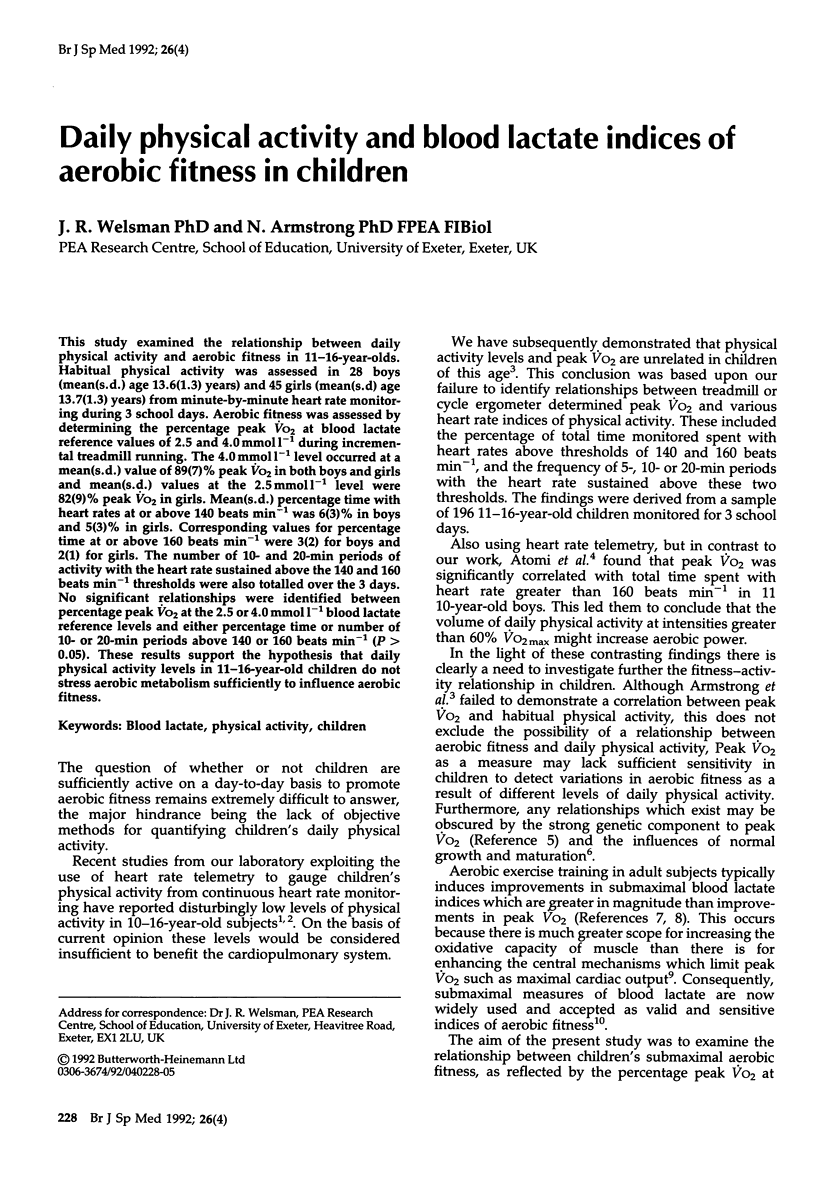
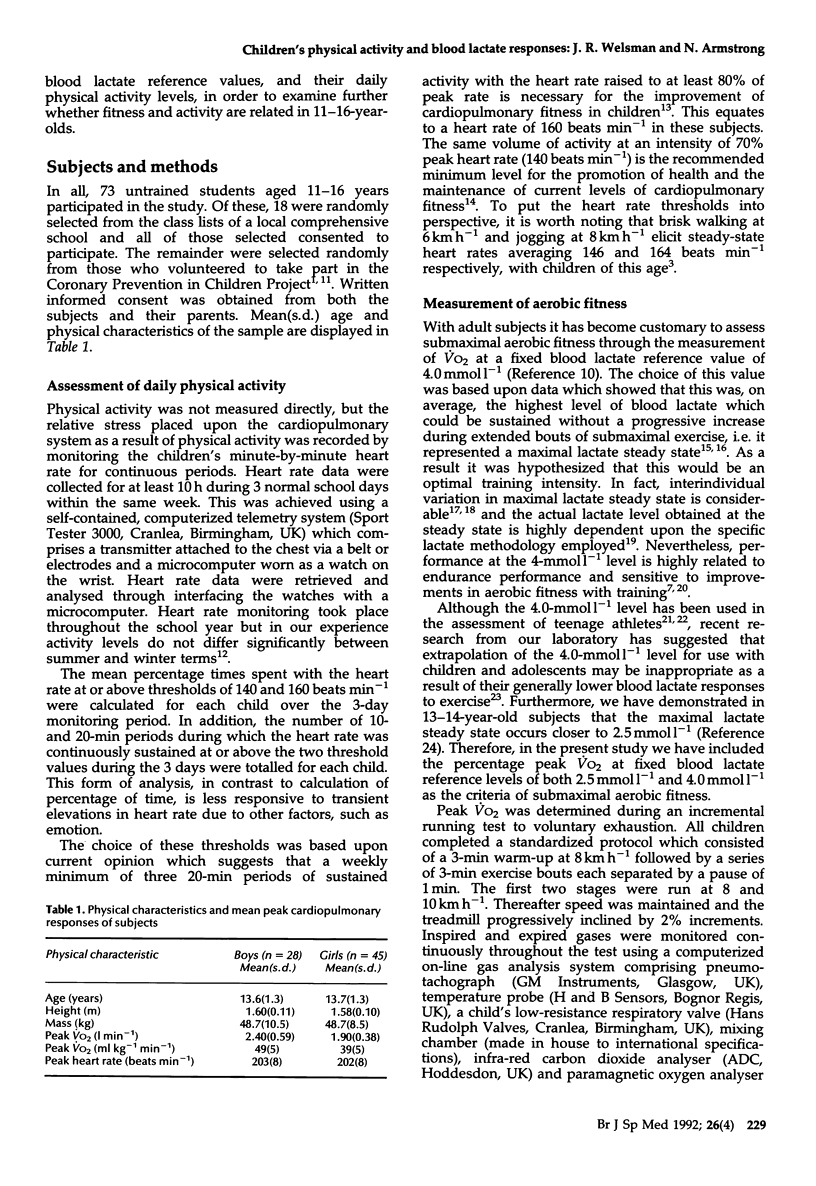
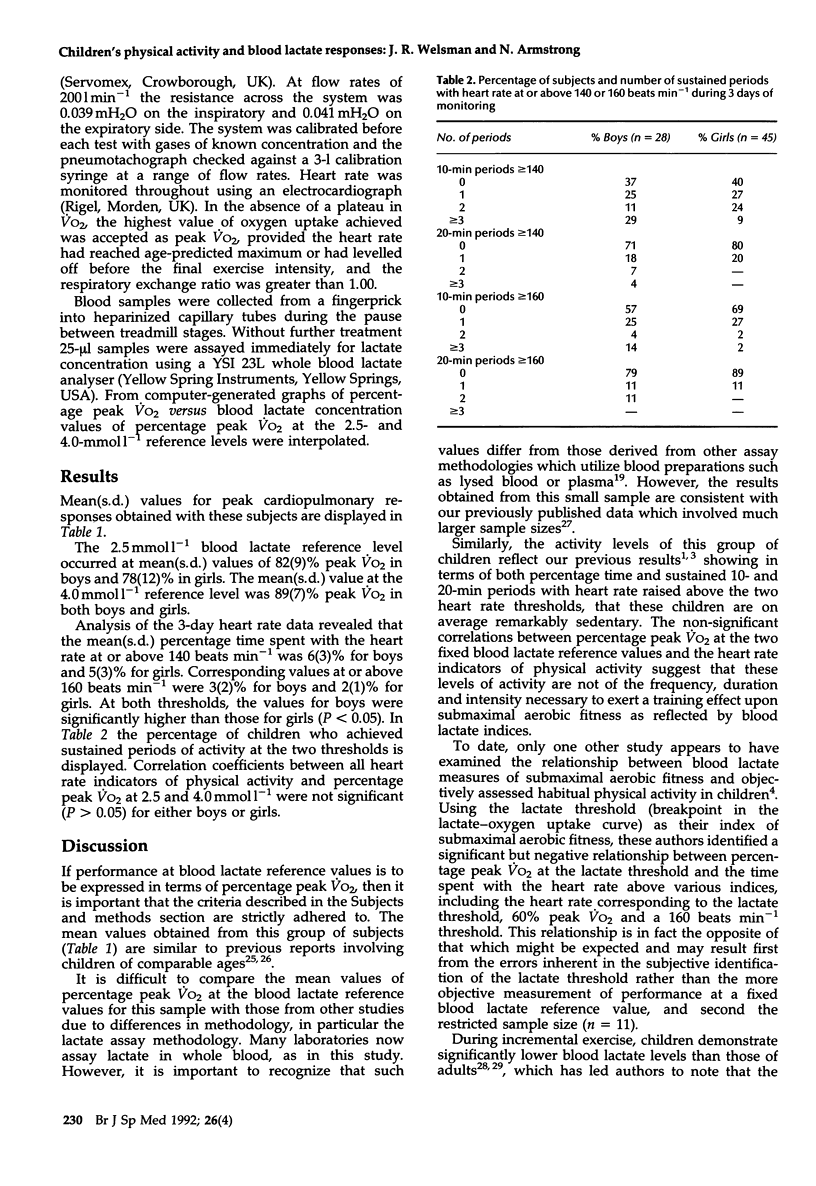
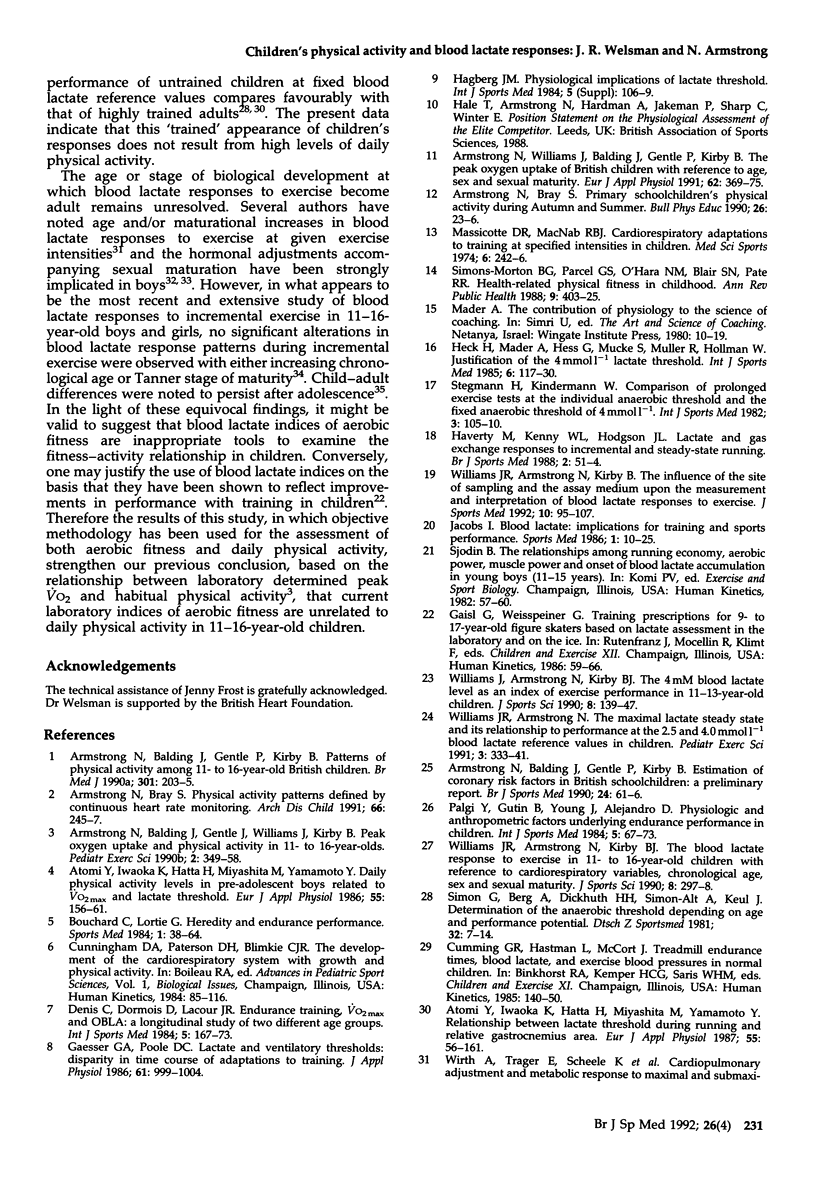
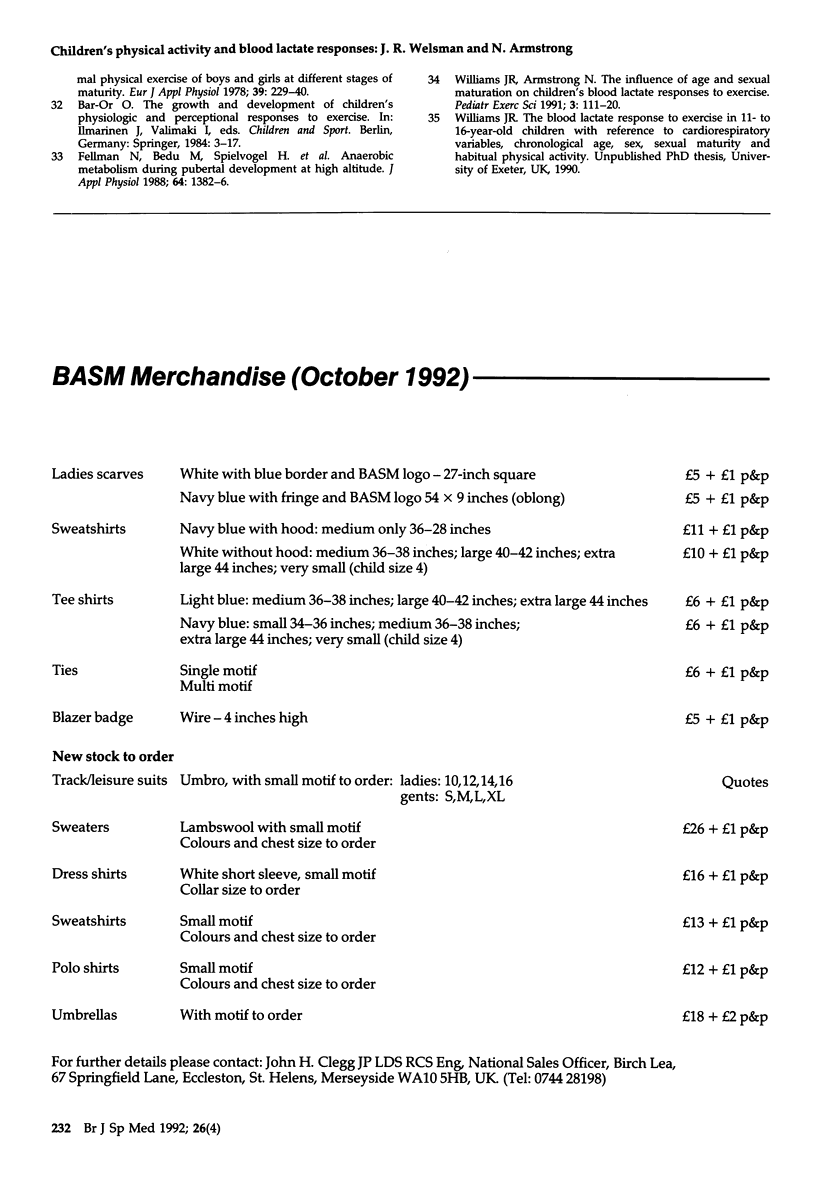
Selected References
These references are in PubMed. This may not be the complete list of references from this article.
- Armstrong N., Balding J., Gentle P., Kirby B. Estimation of coronary risk factors in British schoolchildren: a preliminary report. Br J Sports Med. 1990 Mar;24(1):61–66. doi: 10.1136/bjsm.24.1.61. [DOI] [PMC free article] [PubMed] [Google Scholar]
- Armstrong N., Balding J., Gentle P., Kirby B. Patterns of physical activity among 11 to 16 year old British children. BMJ. 1990 Jul 28;301(6745):203–205. doi: 10.1136/bmj.301.6745.203. [DOI] [PMC free article] [PubMed] [Google Scholar]
- Armstrong N., Bray S. Physical activity patterns defined by continuous heart rate monitoring. Arch Dis Child. 1991 Feb;66(2):245–247. doi: 10.1136/adc.66.2.245. [DOI] [PMC free article] [PubMed] [Google Scholar]
- Armstrong N., Williams J., Balding J., Gentle P., Kirby B. The peak oxygen uptake of British children with reference to age, sex and sexual maturity. Eur J Appl Physiol Occup Physiol. 1991;62(5):369–375. doi: 10.1007/BF00634975. [DOI] [PubMed] [Google Scholar]
- Atomi Y., Iwaoka K., Hatta H., Miyashita M., Yamamoto Y. Daily physical activity levels in preadolescent boys related to VO2max and lactate threshold. Eur J Appl Physiol Occup Physiol. 1986;55(2):156–161. doi: 10.1007/BF00714998. [DOI] [PubMed] [Google Scholar]
- Atomi Y., Iwaoka K., Hatta H., Miyashita M., Yamamoto Y. Daily physical activity levels in preadolescent boys related to VO2max and lactate threshold. Eur J Appl Physiol Occup Physiol. 1986;55(2):156–161. doi: 10.1007/BF00714998. [DOI] [PubMed] [Google Scholar]
- Denis C., Dormois D., Lacour J. R. Endurance training, VO2 max, and OBLA: a longitudinal study of two different age groups. Int J Sports Med. 1984 Aug;5(4):167–173. doi: 10.1055/s-2008-1025899. [DOI] [PubMed] [Google Scholar]
- Fellmann N., Bedu M., Spielvogel H., Falgairette G., Van Praagh E., Jarrige J. F., Coudert J. Anaerobic metabolism during pubertal development at high altitude. J Appl Physiol (1985) 1988 Apr;64(4):1382–1386. doi: 10.1152/jappl.1988.64.4.1382. [DOI] [PubMed] [Google Scholar]
- Gaesser G. A., Poole D. C. Lactate and ventilatory thresholds: disparity in time course of adaptations to training. J Appl Physiol (1985) 1986 Sep;61(3):999–1004. doi: 10.1152/jappl.1986.61.3.999. [DOI] [PubMed] [Google Scholar]
- Haverty M., Kenney W. L., Hodgson J. L. Lactate and gas exchange responses to incremental and steady state running. Br J Sports Med. 1988 Jun;22(2):51–54. doi: 10.1136/bjsm.22.2.51. [DOI] [PMC free article] [PubMed] [Google Scholar]
- Heck H., Mader A., Hess G., Mücke S., Müller R., Hollmann W. Justification of the 4-mmol/l lactate threshold. Int J Sports Med. 1985 Jun;6(3):117–130. doi: 10.1055/s-2008-1025824. [DOI] [PubMed] [Google Scholar]
- Jacobs I. Blood lactate. Implications for training and sports performance. Sports Med. 1986 Jan-Feb;3(1):10–25. doi: 10.2165/00007256-198603010-00003. [DOI] [PubMed] [Google Scholar]
- Massicotte D. R., Macnab R. B. Cardiorespiratory adaptations to training at specified intensities in children. Med Sci Sports. 1974 Winter;6(4):242–246. [PubMed] [Google Scholar]
- Palgi Y., Gutin B., Young J., Alejandro D. Physiologic and anthropometric factors underlying endurance performance in children. Int J Sports Med. 1984 Apr;5(2):67–73. doi: 10.1055/s-2008-1025882. [DOI] [PubMed] [Google Scholar]
- Simons-Morton B. G., Parcel G. S., O'Hara N. M., Blair S. N., Pate R. R. Health-related physical fitness in childhood: status and recommendations. Annu Rev Public Health. 1988;9:403–425. doi: 10.1146/annurev.pu.09.050188.002155. [DOI] [PubMed] [Google Scholar]
- Stegmann H., Kindermann W. Comparison of prolonged exercise tests at the individual anaerobic threshold and the fixed anaerobic threshold of 4 mmol.l(-1) lactate. Int J Sports Med. 1982 May;3(2):105–110. doi: 10.1055/s-2008-1026072. [DOI] [PubMed] [Google Scholar]
- Williams J. R., Armstrong N., Kirby B. J. The 4 mM blood lactate level as an index of exercise performance in 11-13 year old children. J Sports Sci. 1990 Summer;8(2):139–147. doi: 10.1080/02640419008732140. [DOI] [PubMed] [Google Scholar]
- Williams J. R., Armstrong N., Kirby B. J. The influence of the site of sampling and assay medium upon the measurement and interpretation of blood lactate responses to exercise. J Sports Sci. 1992 Apr;10(2):95–107. doi: 10.1080/02640419208729912. [DOI] [PubMed] [Google Scholar]


